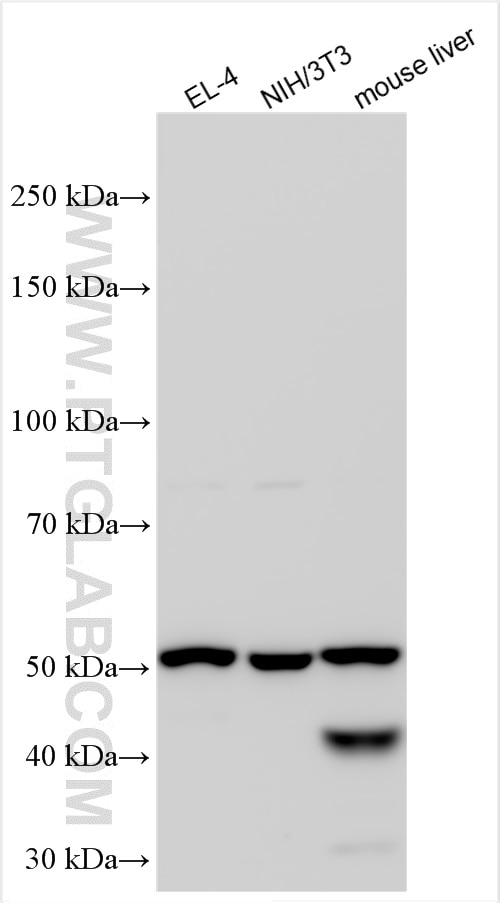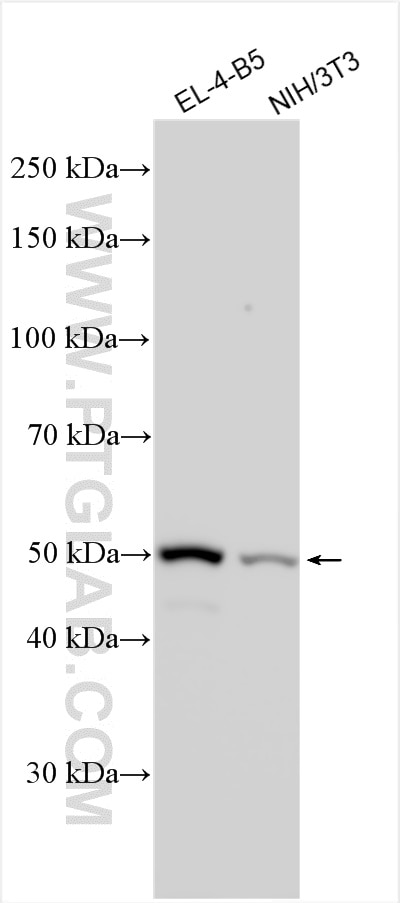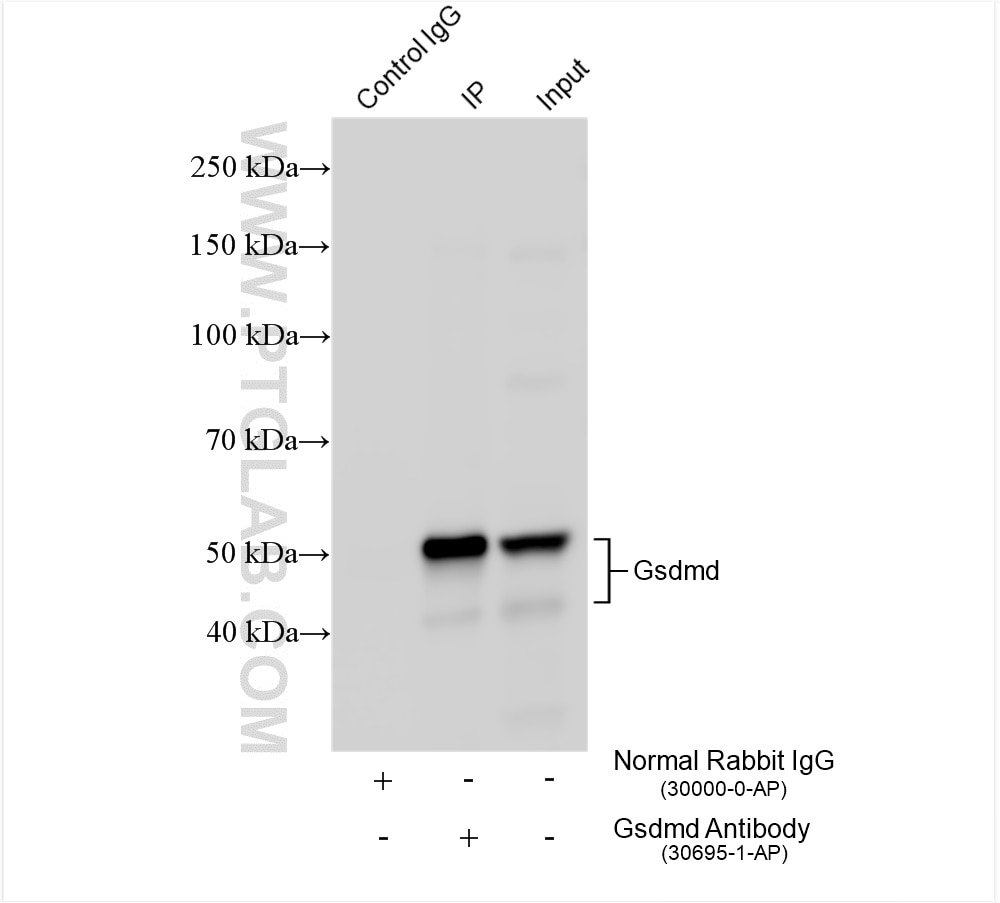Validation Data Gallery
Tested Applications
| Positive WB detected in | EL-4 cells, EL-4-B5 cells, NIH/3T3 cells, mouse liver tissue |
| Positive IP detected in | RAW 264.7 cells |
Recommended dilution
| Application | Dilution |
|---|---|
| Western Blot (WB) | WB : 1:2000-1:12000 |
| Immunoprecipitation (IP) | IP : 0.5-4.0 ug for 1.0-3.0 mg of total protein lysate |
| It is recommended that this reagent should be titrated in each testing system to obtain optimal results. | |
| Sample-dependent, Check data in validation data gallery. | |
Published Applications
| WB | See 1 publications below |
Product Information
30695-1-AP targets GSDMD in WB, IP, ELISA applications and shows reactivity with mouse samples.
| Tested Reactivity | mouse |
| Cited Reactivity | mouse |
| Host / Isotype | Rabbit / IgG |
| Class | Polyclonal |
| Type | Antibody |
| Immunogen | GSDMD fusion protein Ag33609 相同性解析による交差性が予測される生物種 |
| Full Name | gasdermin D |
| Calculated molecular weight | 53 kDa |
| Observed molecular weight | 50-53 kDa, 43 kDa |
| GenBank accession number | BC029813 |
| Gene Symbol | Gsdmd |
| Gene ID (NCBI) | 69146 |
| RRID | AB_3086391 |
| Conjugate | Unconjugated |
| Form | |
| Form | Liquid |
| Purification Method | Antigen affinity purification |
| UNIPROT ID | Q9D8T2 |
| Storage Buffer | PBS with 0.02% sodium azide and 50% glycerol{{ptg:BufferTemp}}7.3 |
| Storage Conditions | Store at -20°C. Stable for one year after shipment. Aliquoting is unnecessary for -20oC storage. |
Background Information
GSDMD is a member of the gasdermin family. Members of this family appear to play a role in regulation of epithelial proliferation. GSDMD has been suggested to act as a tumor suppressor. Recently, GSDMD is identified as a new component of inflammasomes, and it is an executor of pyroptosis and required for interleukin-1β secretion. Cleavage of GSDMD by inflammatory caspases determines pyroptotic cell death. Cleavage of GSDMD by inflammatory caspases determines pyroptotic cell death. This antibody can detect 53 kDa full-length GSDMD and 43 kDa fragment as described in the literature (PMID: 28392147, PMID: 28979266).
Protocols
| Product Specific Protocols | |
|---|---|
| WB protocol for GSDMD antibody 30695-1-AP | Download protocol |
| IP protocol for GSDMD antibody 30695-1-AP | Download protocol |
| Standard Protocols | |
|---|---|
| Click here to view our Standard Protocols |
Publications
| Species | Application | Title |
|---|---|---|
Ecotoxicol Environ Saf MANF inhibits NLRP3 inflammasome activation by competitively binding to DDX3X in paraquat-stimulated alveolar macrophages |



